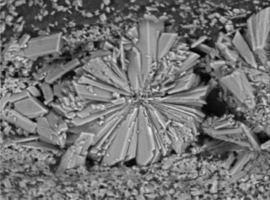Francisco-Javier Roldan-Gómez1, Gabriela Rodríguez-Echeverría1, Carlos Linares Lopez2 and Aurora de la Peña-Díaz1,2*
1Outpatient and Molecular Biology Departments at the Instituto Nacional de Cardiología Ignacio Chávez (INC), Mexico City, Mexico
2Medicine Faculty, pharmacology Department and Geophysics Institute at the Universidad Nacional Autónoma de México (UNAM), Mexico City, Mexico
*Corresponding author: Aurora de la Peña Díaz, Instituto Nacional de Cardiología Ignacio Chávez, Juan Badiano Núm, 1 Col, Belisario Domínguez Sección XVI, Tlalpan, CP 14080, Mexico City, Mexico.
Received: October 21, 2022; Accepted: November 02, 2022; Published: November 15, 2022
Citation: Roldan-Gómez FJ, Rodríguez-Echeverría G, Lopez CL, Peña-Díaz ADL. Calcified Aorta, Urine Lithiasis and Hydroxyapatite Stars. Case Rep Clin Cardiol J. 2022; 2(2): 114.

